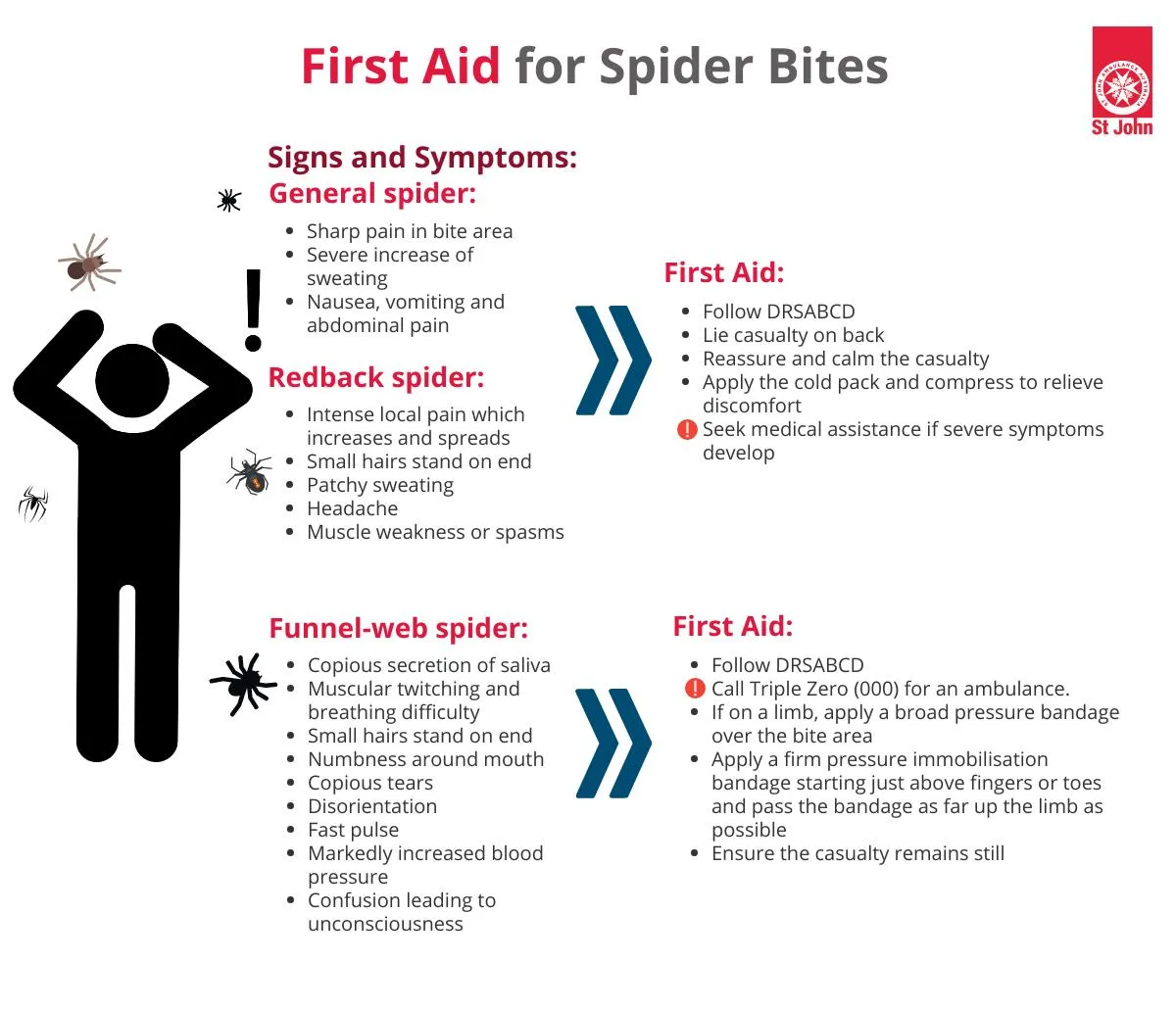Understanding Tarantula Bites
Tarantulas, while generally not as venomous as some other spiders, can still inflict painful bites. These bites can cause a range of reactions, from mild irritation to more severe allergic responses. It’s crucial to understand the potential risks and know how to react promptly and effectively. Tarantulas possess fangs that they use to inject venom when they bite. The severity of the reaction depends on several factors, including the amount of venom injected, the individual’s sensitivity, and the specific type of tarantula. While most bites are not life-threatening, they can be distressing and require immediate attention to alleviate symptoms and prevent complications. Therefore, a clear understanding of the basics of tarantula bites is essential for anyone who may encounter these spiders, either in the wild or as pets.
Symptoms of a Tarantula Bite
Recognizing the symptoms of a tarantula bite is the first step in providing appropriate first aid. Common symptoms include localized pain, which can range from a mild sting to intense throbbing. Redness and swelling around the bite area are also typical, indicating the body’s inflammatory response. In some cases, there may be itching, burning, or a sensation of numbness or tingling. More severe reactions can manifest as muscle cramps, nausea, vomiting, and difficulty breathing. Allergic reactions are rare but serious, potentially leading to anaphylaxis, a life-threatening condition that requires immediate medical attention. Keep a close watch for these symptoms after a suspected bite, and seek medical advice if you observe any signs of a severe reaction or if the symptoms worsen over time. The more information you have the better.
Immediate First Aid Steps

When a tarantula bites, swift action is necessary to minimize discomfort and prevent complications. The initial steps involve staying calm and moving the person away from the spider to avoid further bites. Ensure your own safety while helping the person. Gently clean the bite area with mild soap and water to remove any remaining venom or debris. Apply a cold compress to reduce swelling and alleviate pain. It is also advisable to elevate the affected limb to help decrease swelling. These initial steps can help lessen the immediate impact of the bite, and provide the person with comfort. Remember to monitor for signs of a severe reaction, and always seek medical advice if you are unsure about the severity of the bite.
Washing the Wound
Immediately after a tarantula bite, thoroughly washing the wound is a crucial first aid step. Use mild soap and water, gently cleaning the area to remove any remaining venom or debris. This action helps to prevent infection and reduce the risk of complications. Make sure to use clean water and wash the area carefully, without excessive scrubbing, which could cause further irritation. Pat the area dry with a clean cloth or gauze. Avoid using harsh chemicals or antiseptics unless directed by a medical professional, as these could cause additional skin irritation. Proper wound cleaning can significantly reduce the chances of infection and contribute to a faster recovery.
Applying a Cold Compress
Applying a cold compress to the bite area can provide immediate relief from pain and reduce swelling. A cold compress, such as an ice pack wrapped in a cloth, can constrict blood vessels, decreasing inflammation and numbing the area. Apply the compress for 10–15 minutes at a time, taking breaks to prevent skin damage. Place a barrier, like a cloth, between the ice pack and skin. This simple technique can help alleviate discomfort and minimize the impact of the bite. Continue to monitor the bite for any unusual signs or symptoms. If symptoms do not improve, or if they worsen, seek medical attention promptly. Remember that a cold compress is a helpful first aid measure, but does not replace the need for medical advice when necessary.
Elevating the Affected Limb

Elevating the affected limb is a simple yet effective way to reduce swelling following a tarantula bite. By raising the arm or leg above the level of the heart, you encourage the fluid in the affected area to drain, thus reducing swelling and discomfort. This action also helps to minimize the build-up of inflammatory substances at the bite site. Ensure the person is in a comfortable position and can keep the limb elevated without strain. Regularly check the limb for any signs of increased pain, numbness, or discoloration. Elevating the limb is a recommended first aid step, but it should be used in conjunction with other measures, such as applying a cold compress and seeking medical advice if symptoms worsen or persist. Elevating the limb makes for a more comfortable healing experience.
Monitoring for Allergic Reactions
Monitoring for allergic reactions is essential following a tarantula bite, as these reactions can be severe and life-threatening. Watch for symptoms such as difficulty breathing, swelling of the face, lips, or tongue, hives, dizziness, or a rapid heartbeat. These are signs of anaphylaxis, a serious allergic reaction that requires immediate medical attention. If any of these symptoms appear, call emergency services or seek medical help immediately. Even if the initial symptoms seem mild, monitor the person closely for several hours, as allergic reactions can sometimes develop or worsen over time. Be aware of any changes in the person’s condition and be prepared to act quickly if necessary. It’s always better to err on the side of caution when it comes to allergic reactions.
When to Seek Medical Attention
Knowing when to seek medical attention after a tarantula bite is critical. Consult a doctor immediately if the person experiences severe symptoms like difficulty breathing, swelling of the face or throat, or a rapid heartbeat, as these could indicate a serious allergic reaction. Seek medical advice if the bite area shows signs of infection, such as increased redness, pus, or fever. Also, if the pain is severe or persists for more than a few days, it’s best to consult with a healthcare professional. The doctor can properly assess the bite, provide appropriate treatment, and rule out any potential complications. If you are unsure about the severity of the bite or the symptoms, do not hesitate to seek medical guidance. Your health and safety is the most important factor.
Preventing Tarantula Bites

Preventing tarantula bites requires careful awareness and precautions, especially in areas where these spiders are common. Avoid disturbing tarantulas or their habitats. If you encounter a tarantula, keep a safe distance and do not attempt to handle or provoke it. Wear protective clothing, such as long sleeves, long pants, and gloves, when working outdoors in areas where tarantulas may be present. Regularly inspect your home and surroundings for potential spider habitats. Keep your yard clear of clutter and debris, which can provide hiding places for tarantulas. Educate yourself and others about tarantulas, their behavior, and the importance of respecting their space. With proper precautions and awareness, you can significantly reduce the risk of tarantula bites.
Handling Tarantulas Safely
If you choose to handle a tarantula, it’s essential to do so with utmost care and understanding of their behavior. Always use proper handling techniques to minimize the risk of a bite. Wear appropriate protective gear, such as thick gloves and long sleeves, to shield your skin from potential irritation or bites. Handle the tarantula in a secure environment, such as a well-lit area where you can easily see the spider’s movements. Avoid sudden movements or actions that might startle the tarantula. Support the spider’s body gently, avoiding any squeezing or pressure that could cause stress. Be aware of the tarantula’s posture, which can indicate its mood. If the spider appears agitated, stop handling it immediately. Handling tarantulas should always be done with caution and respect for the animal’s well-being and for your own safety.
Creating a Safe Environment
Creating a safe environment around your home and in the areas you frequent can reduce the likelihood of encountering tarantulas and prevent bites. Seal any cracks or openings in your home’s foundation, walls, and around windows and doors to prevent spiders from entering. Clear away any clutter or debris in your yard that could provide shelter for tarantulas. Keep your yard well-lit, as tarantulas are often attracted to darkness. Be cautious when reaching into areas that may provide hiding places for spiders, such as woodpiles or overgrown vegetation. When working outdoors, wear protective clothing, and check your clothing and shoes for any spiders before entering your home. Regular maintenance and awareness will go a long way toward maintaining a safe environment.
